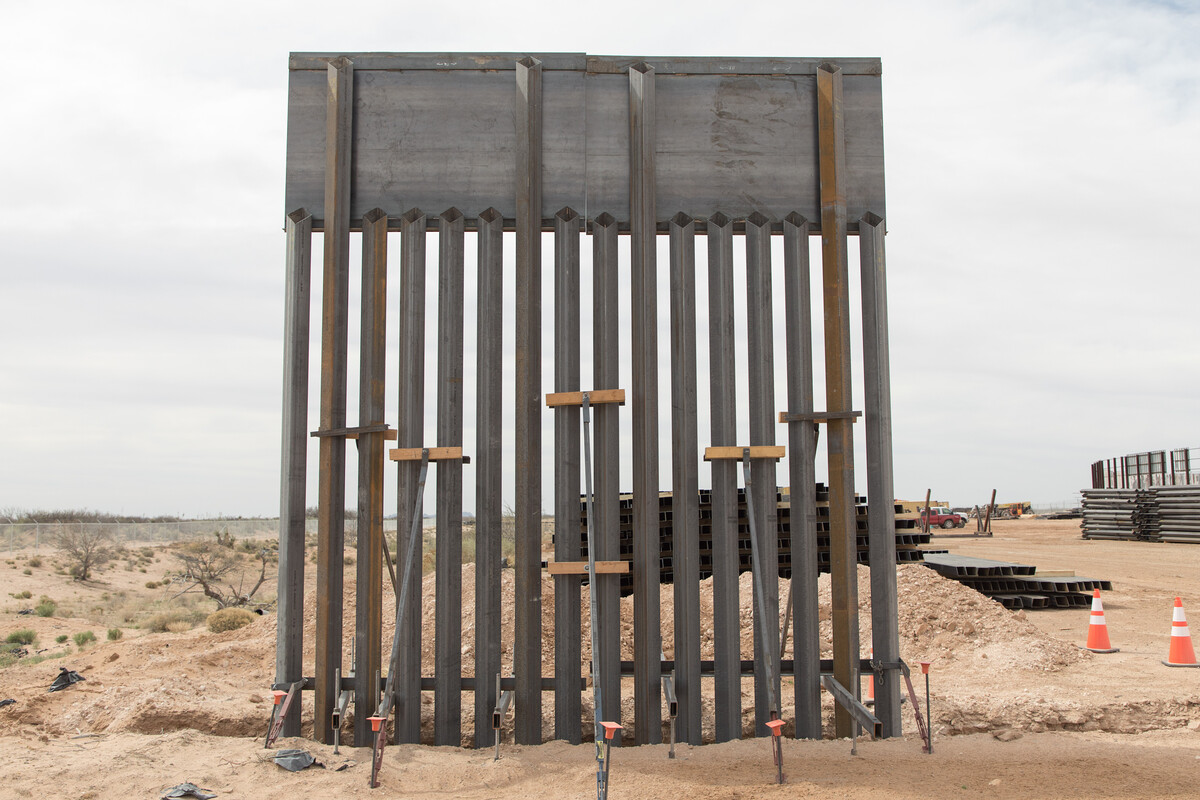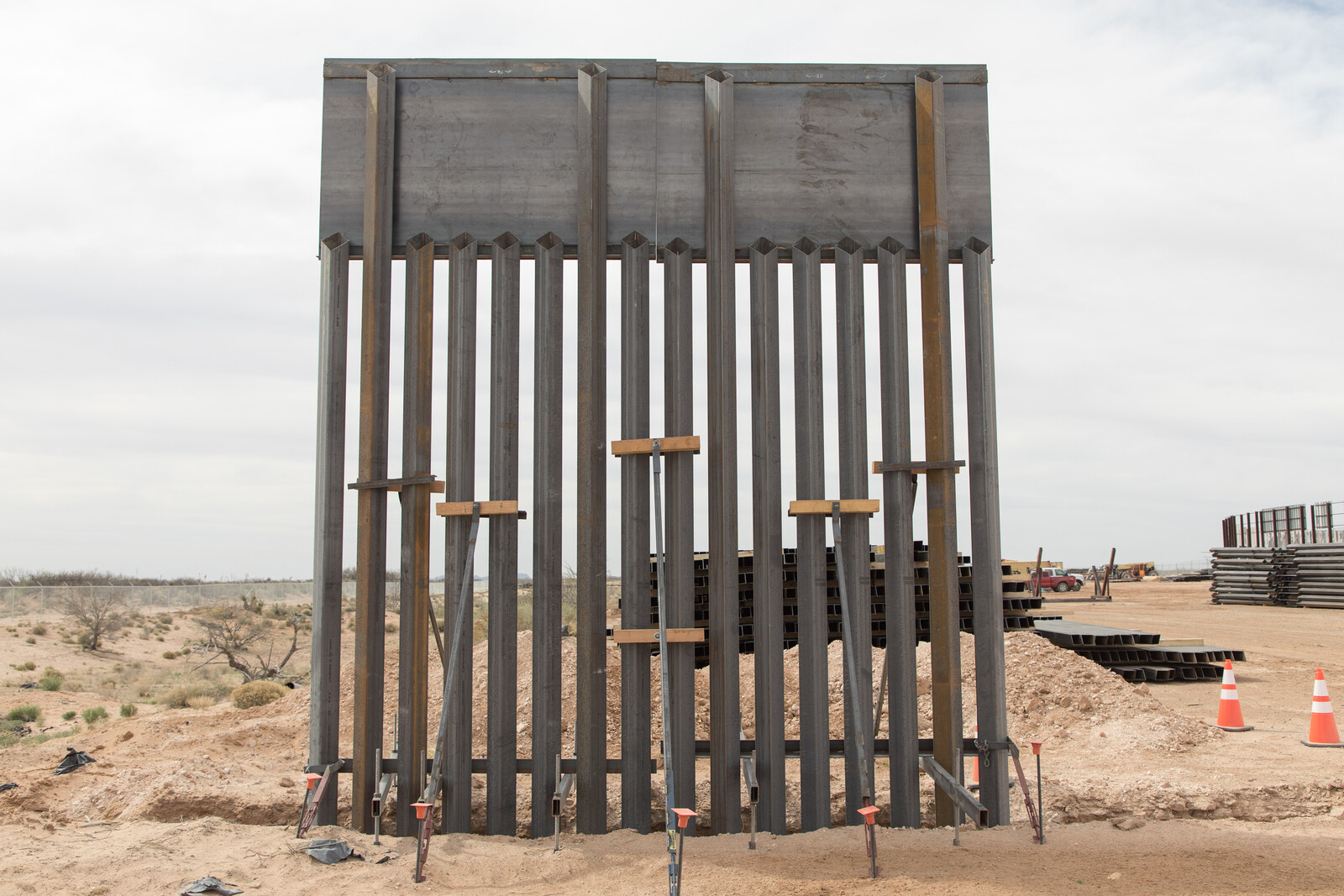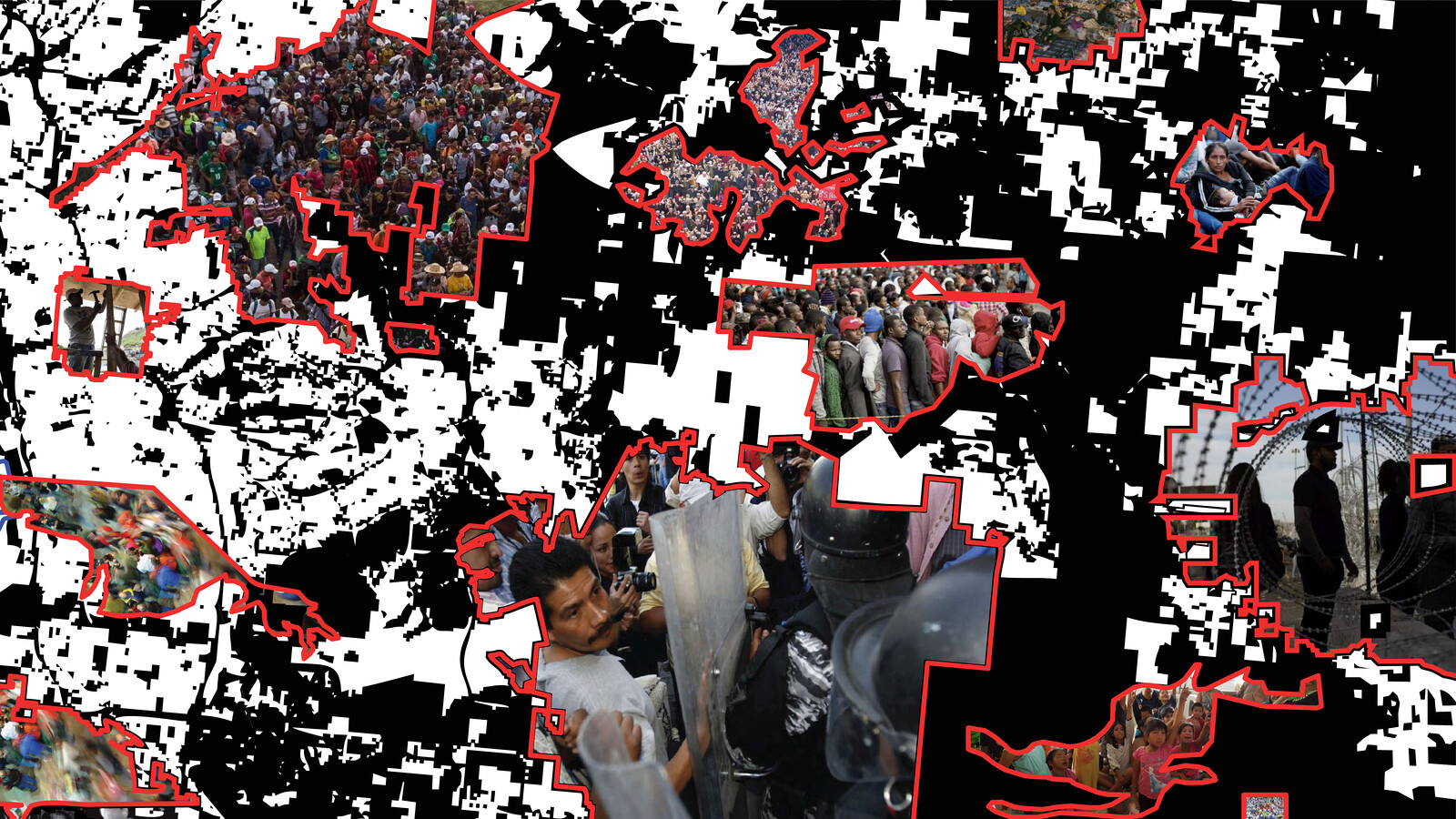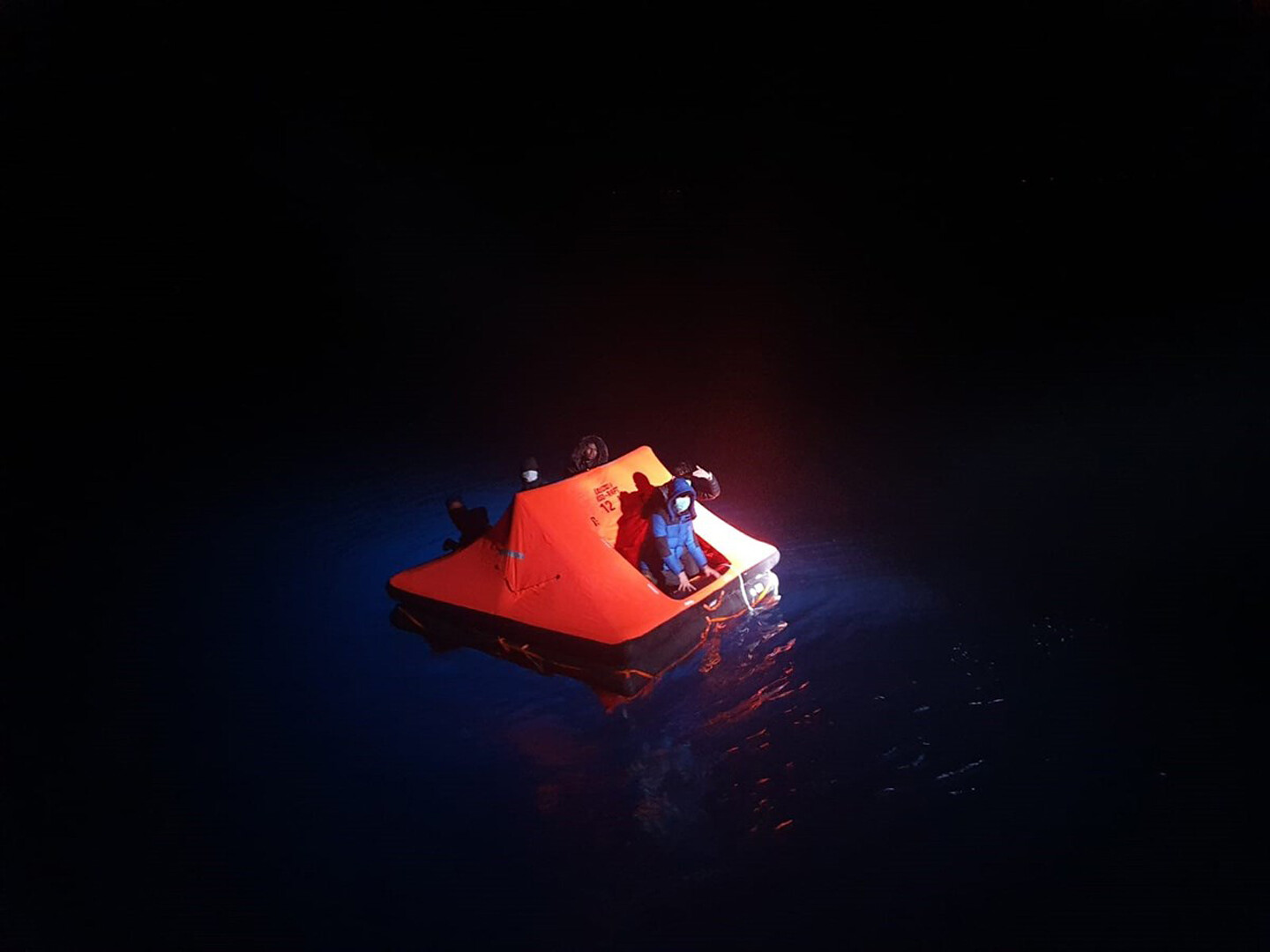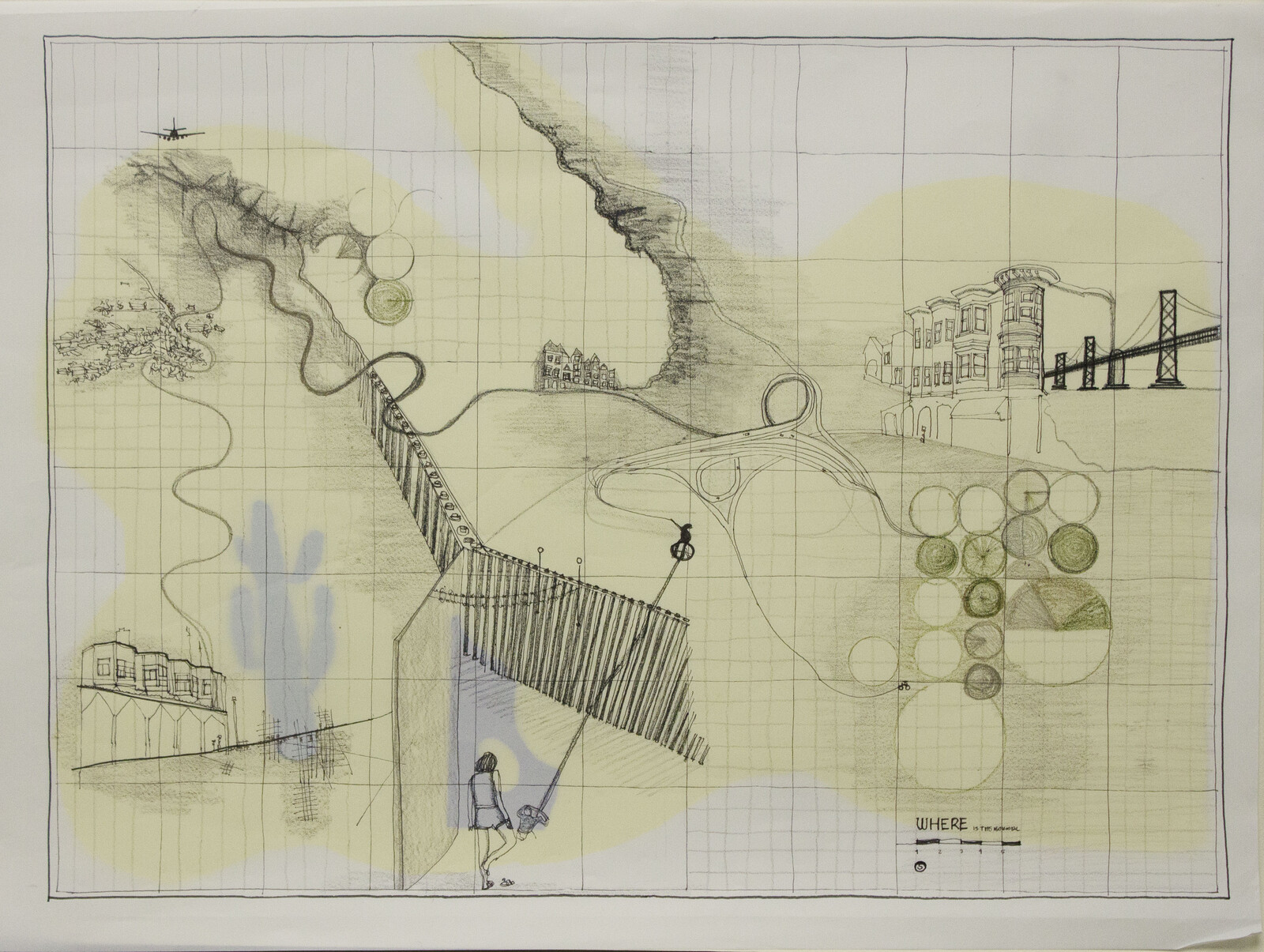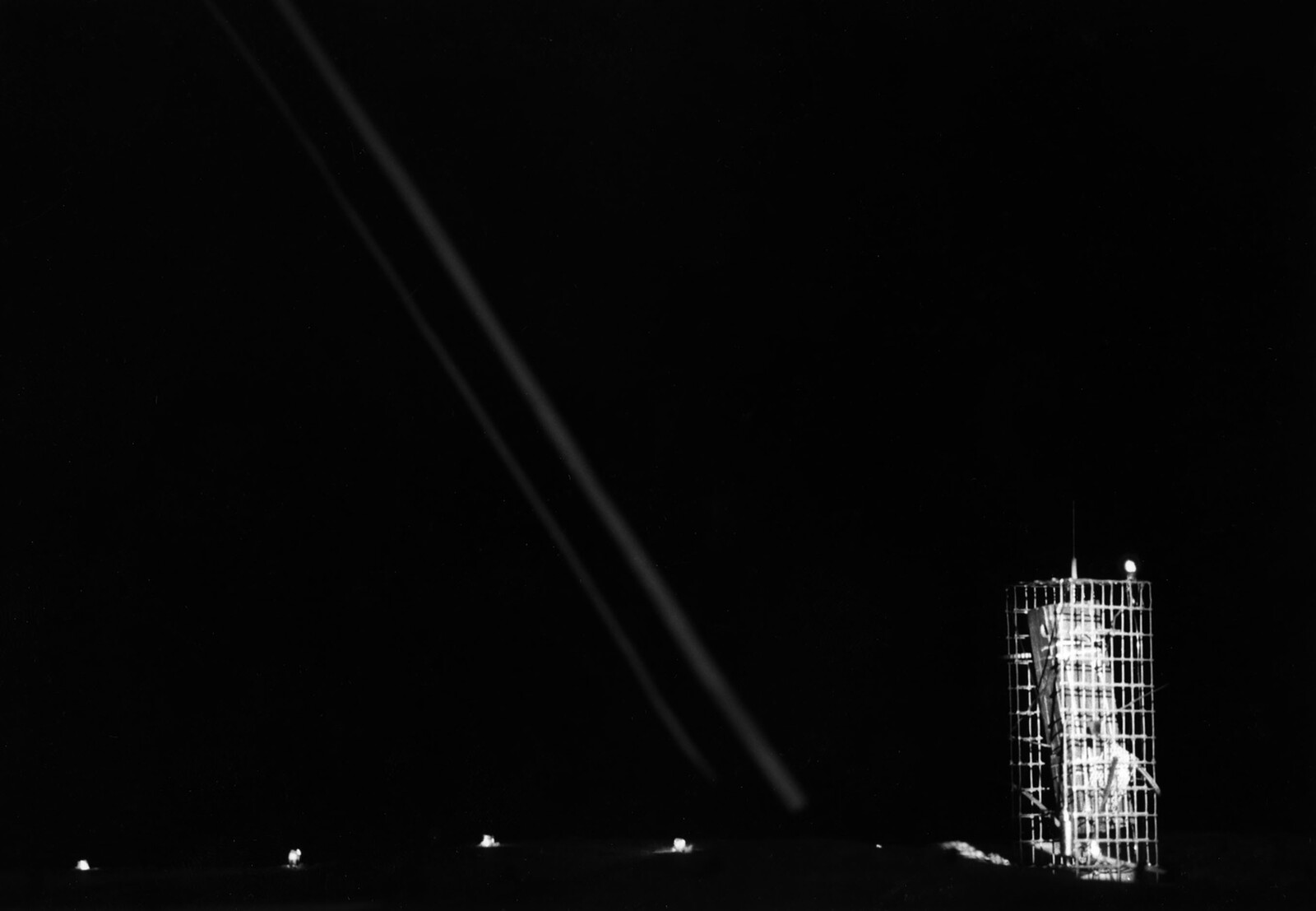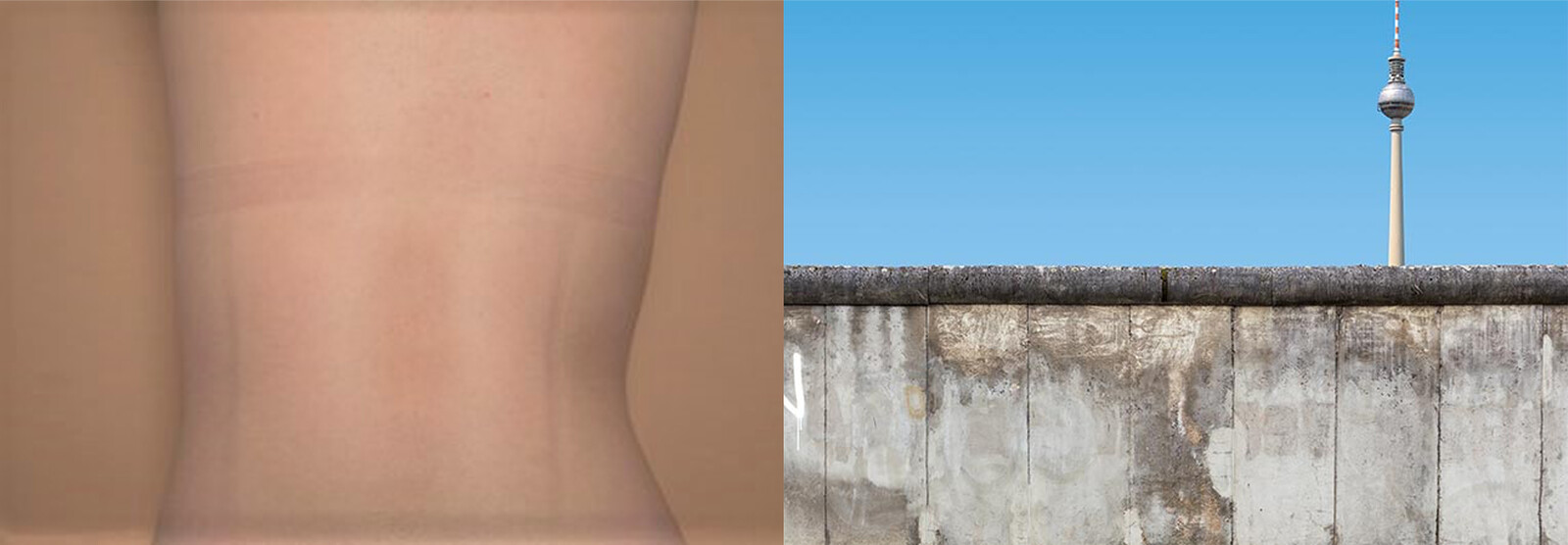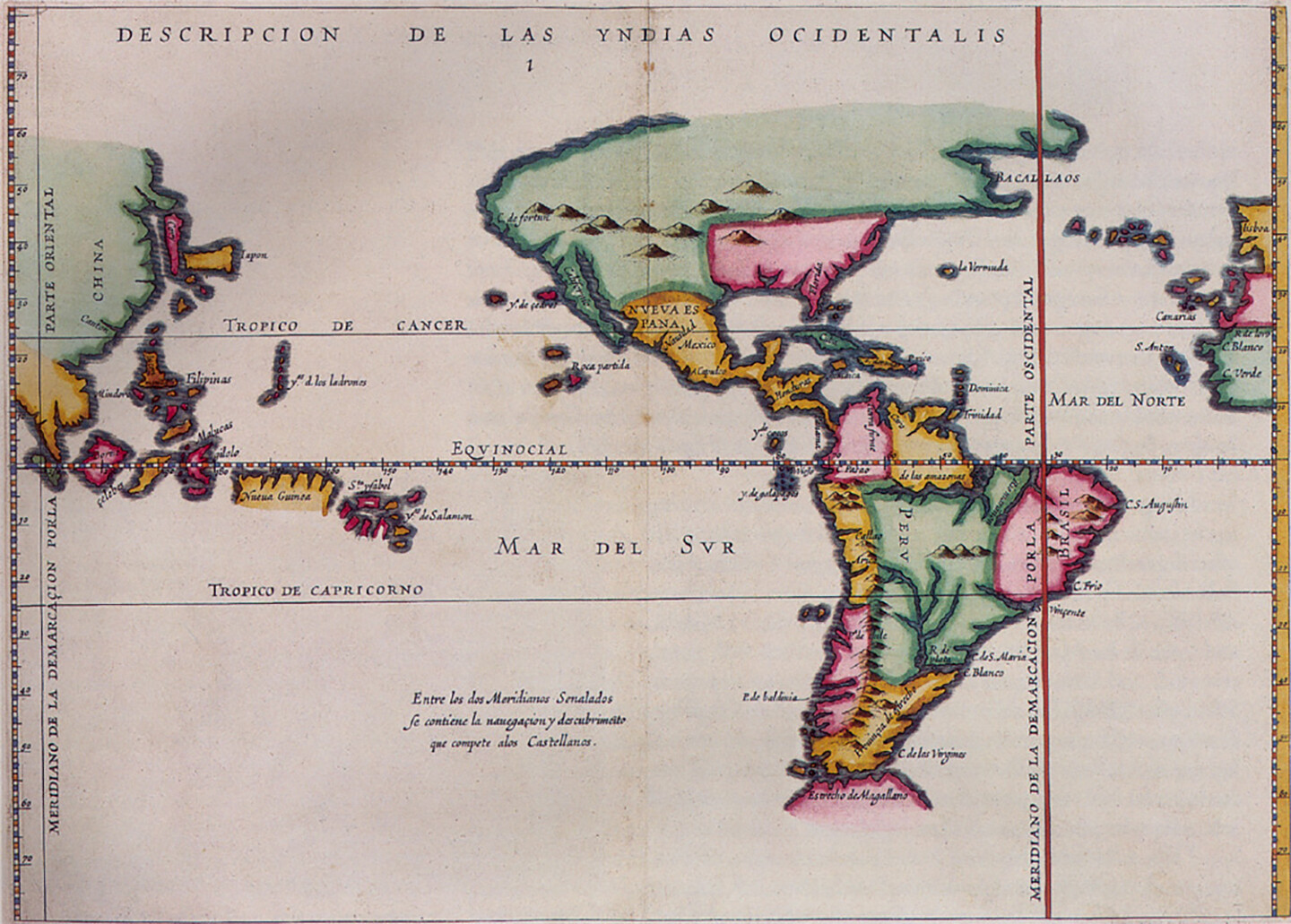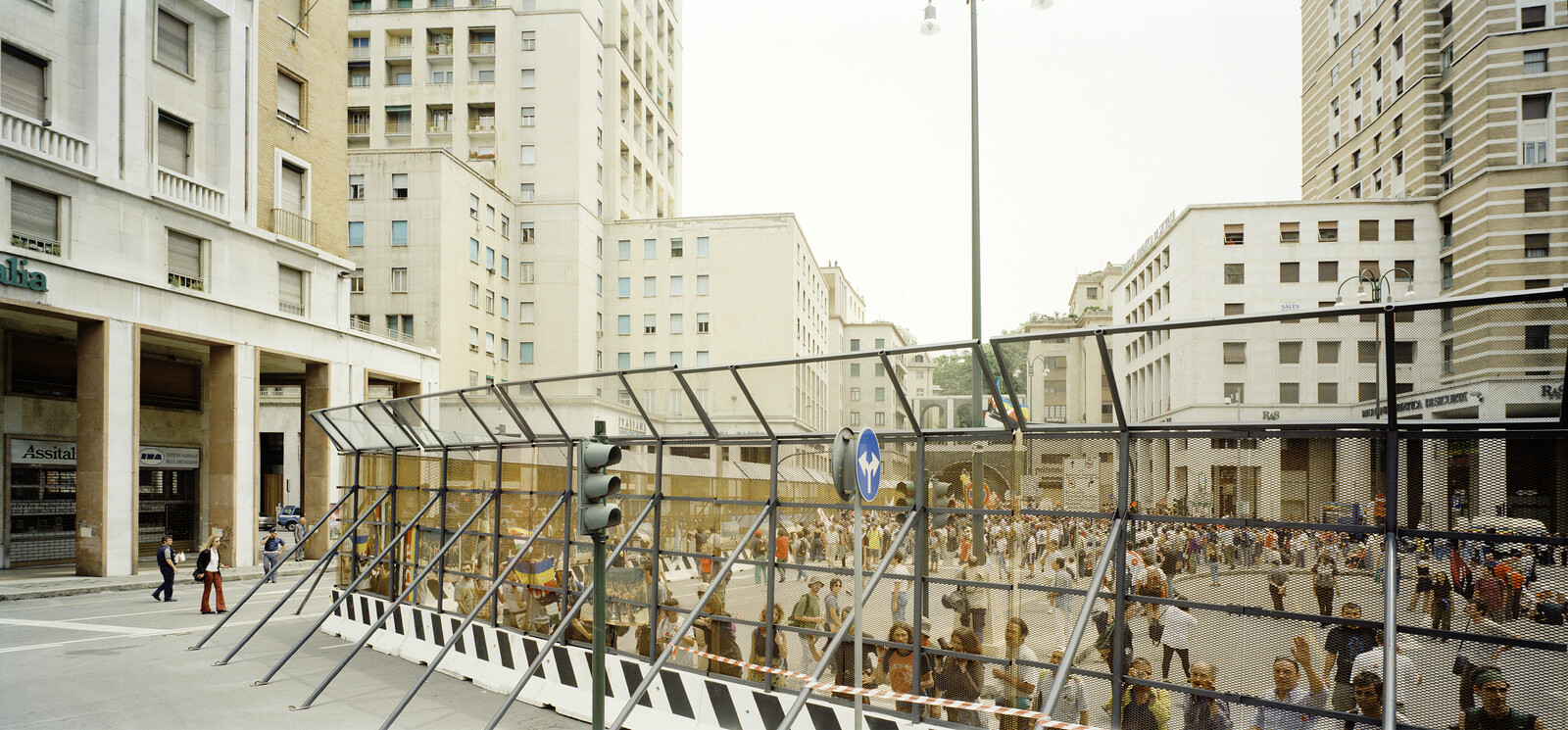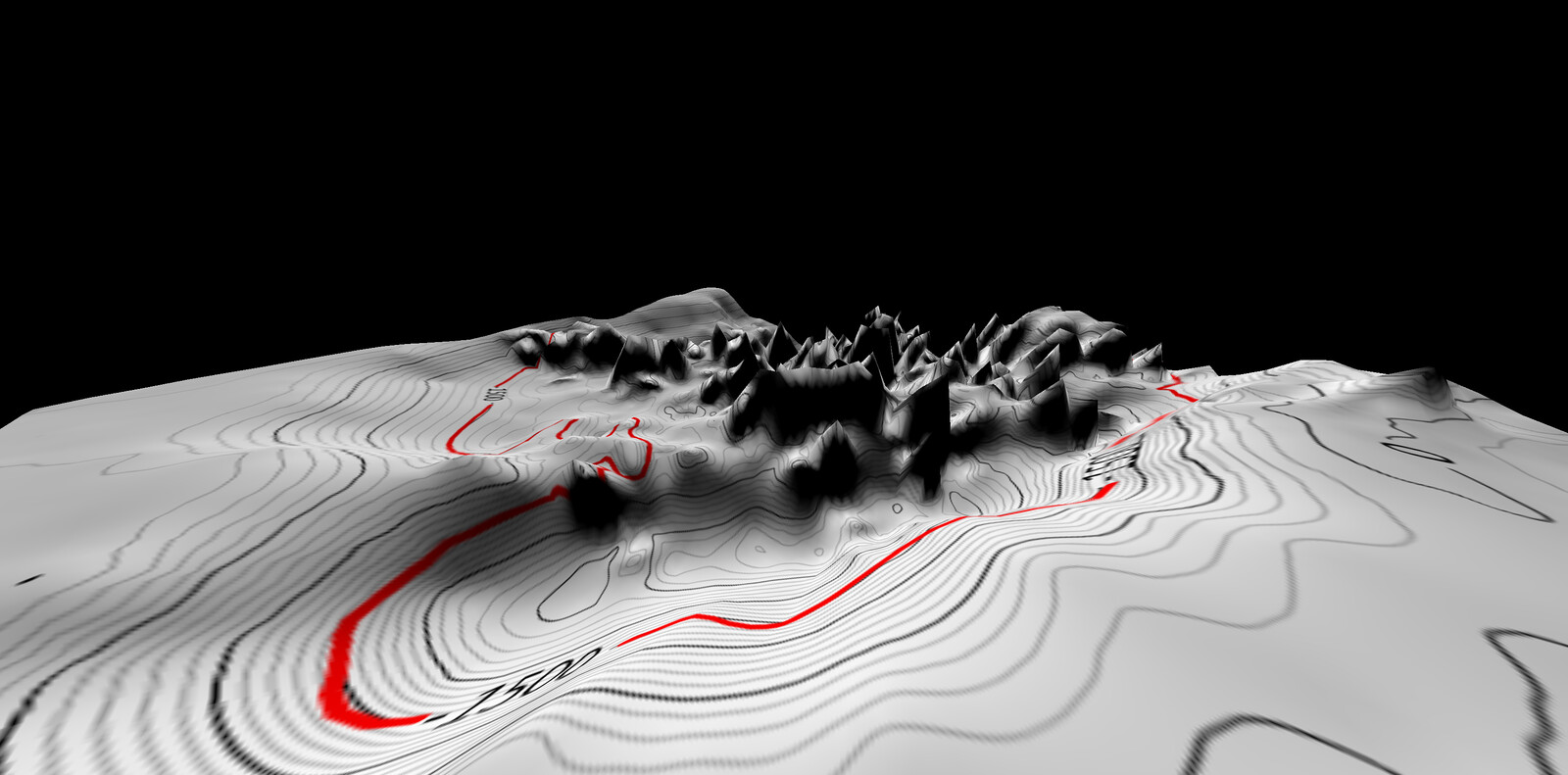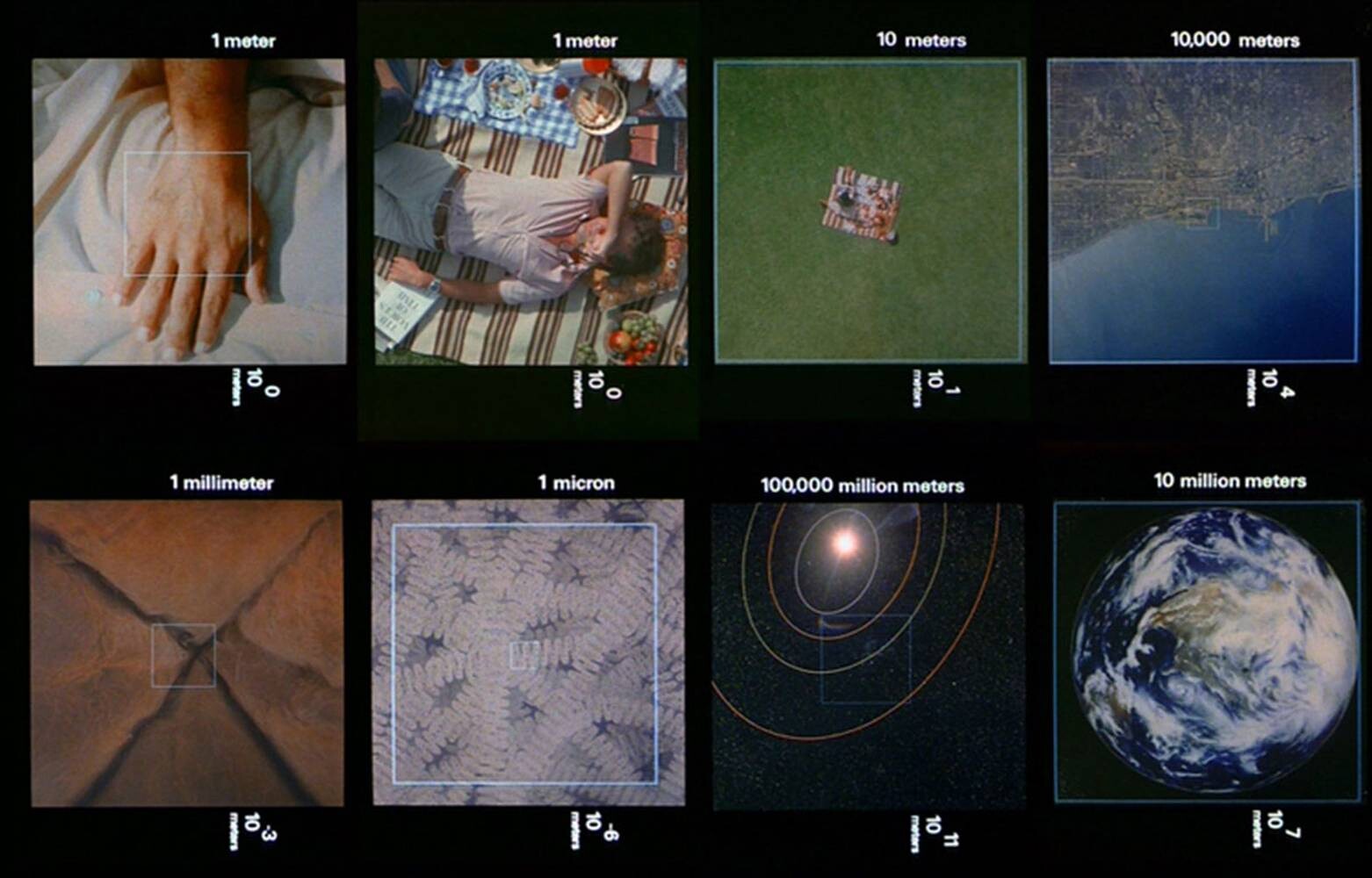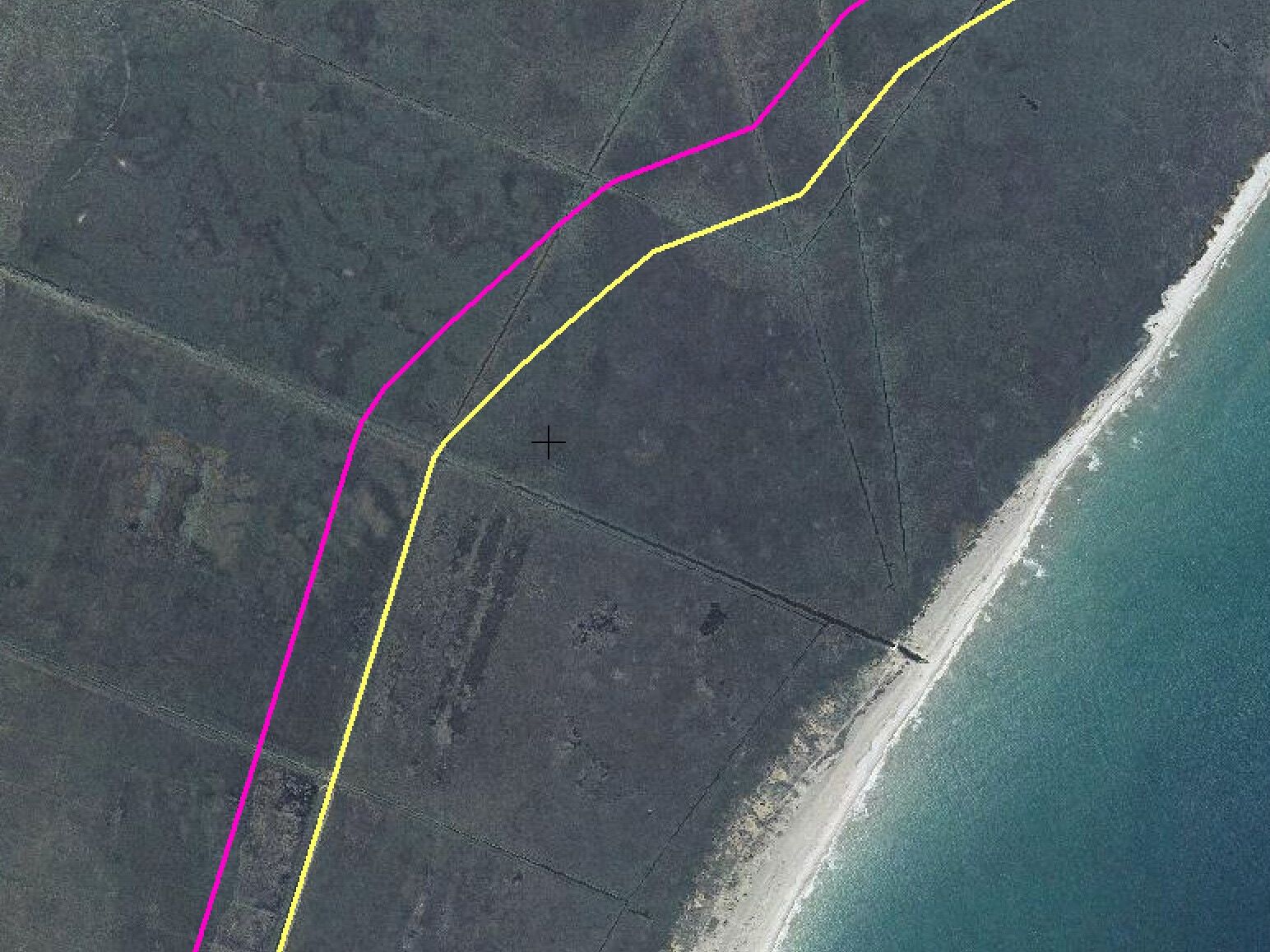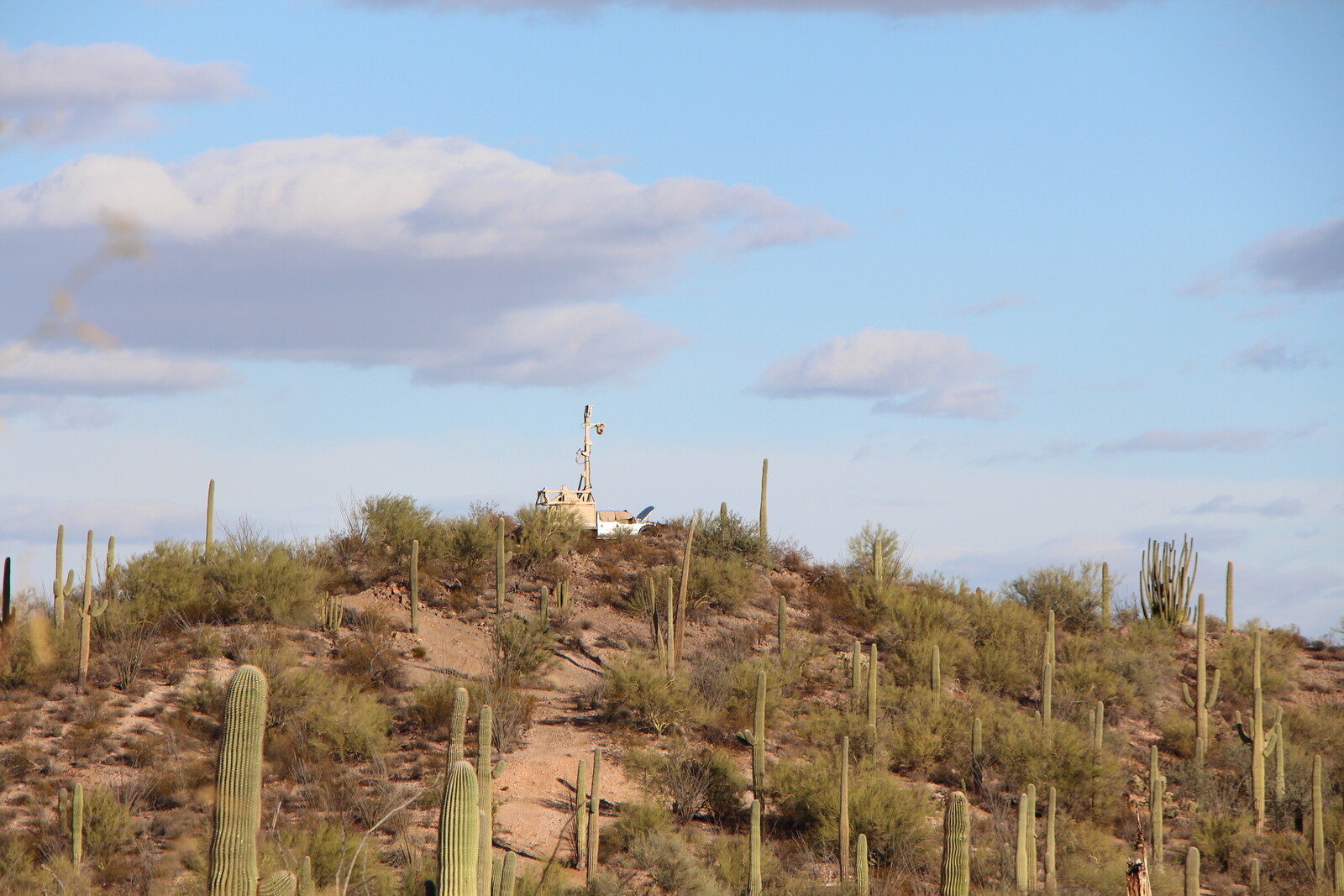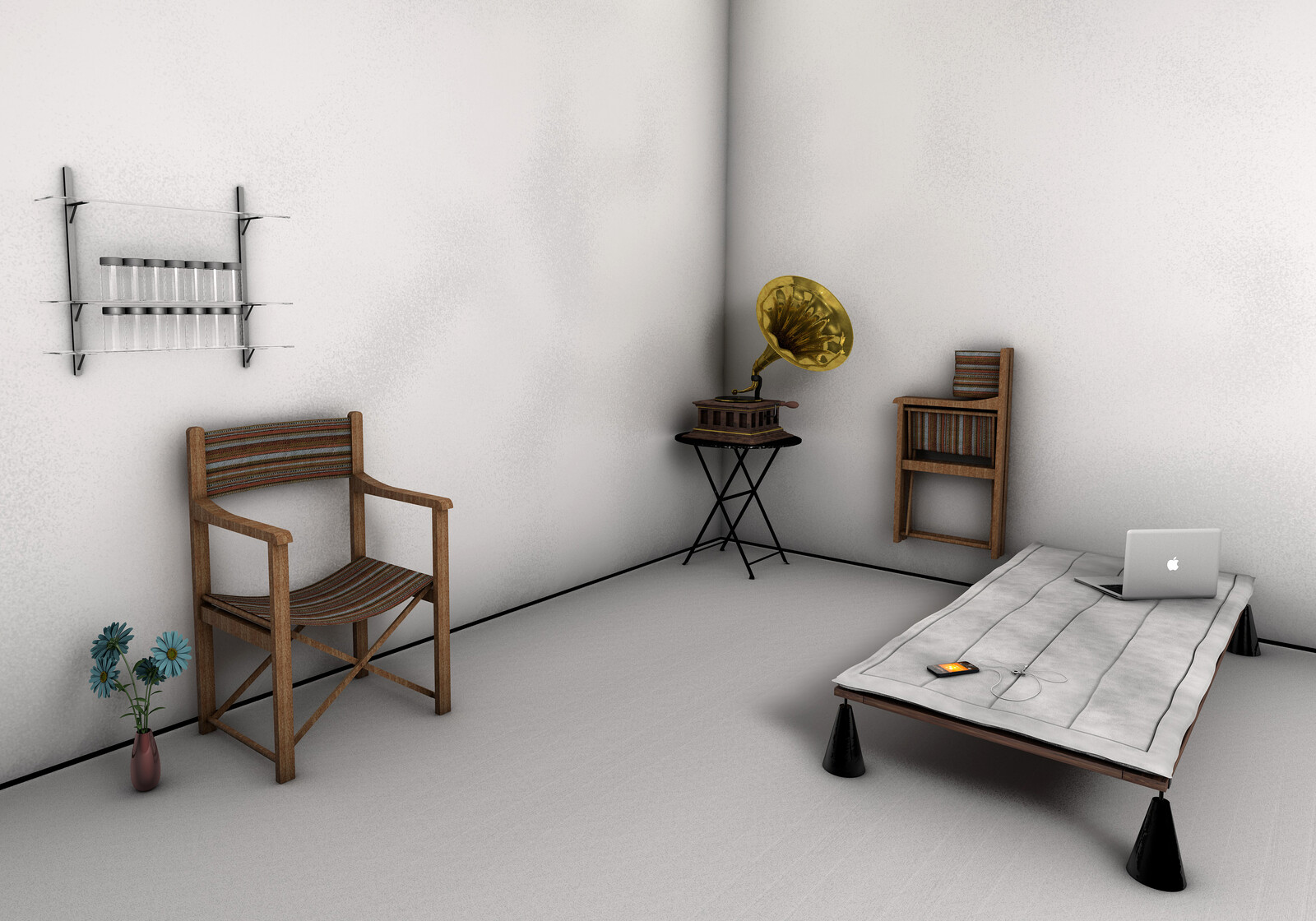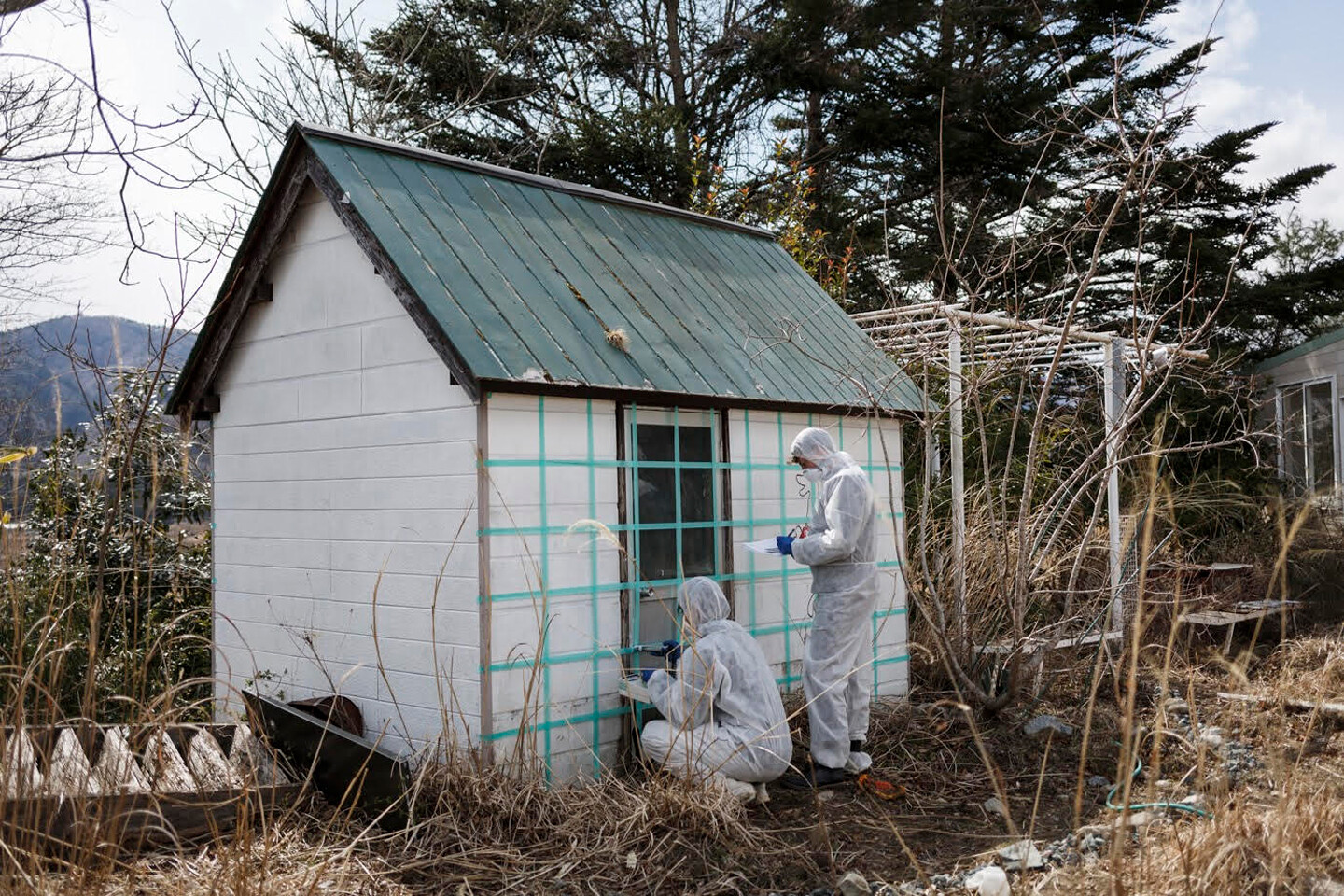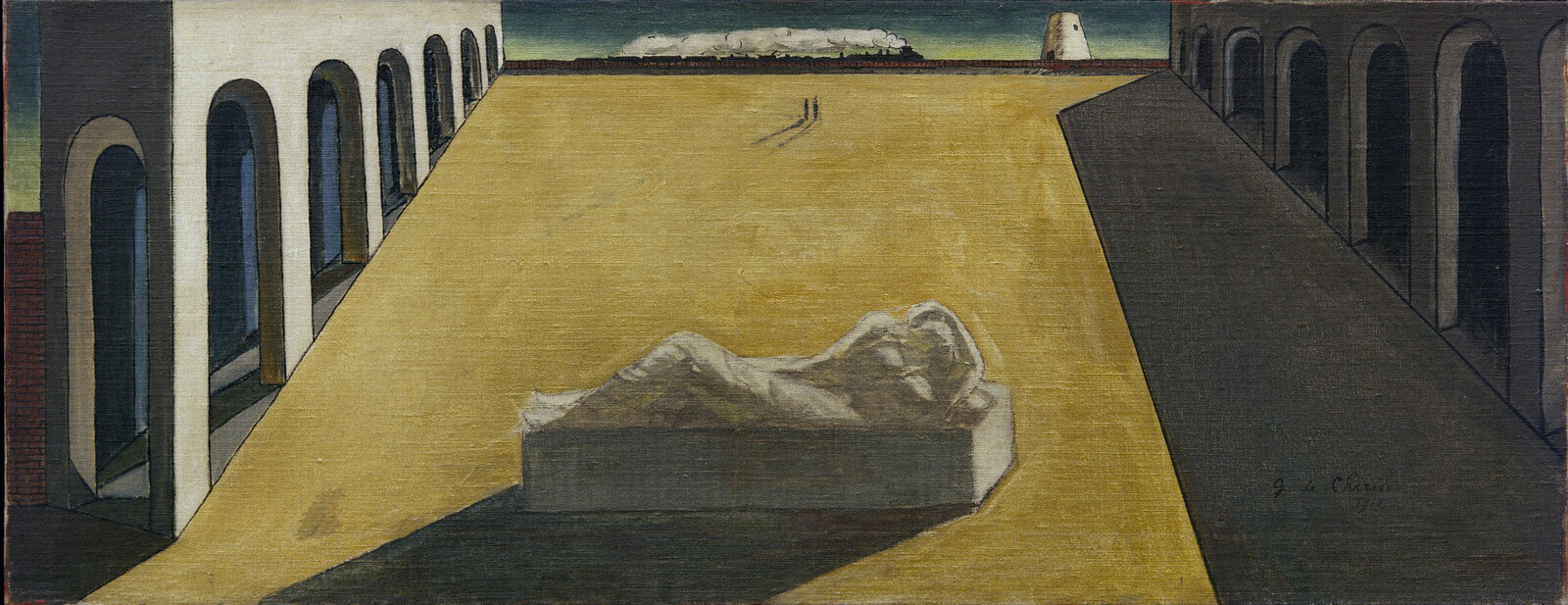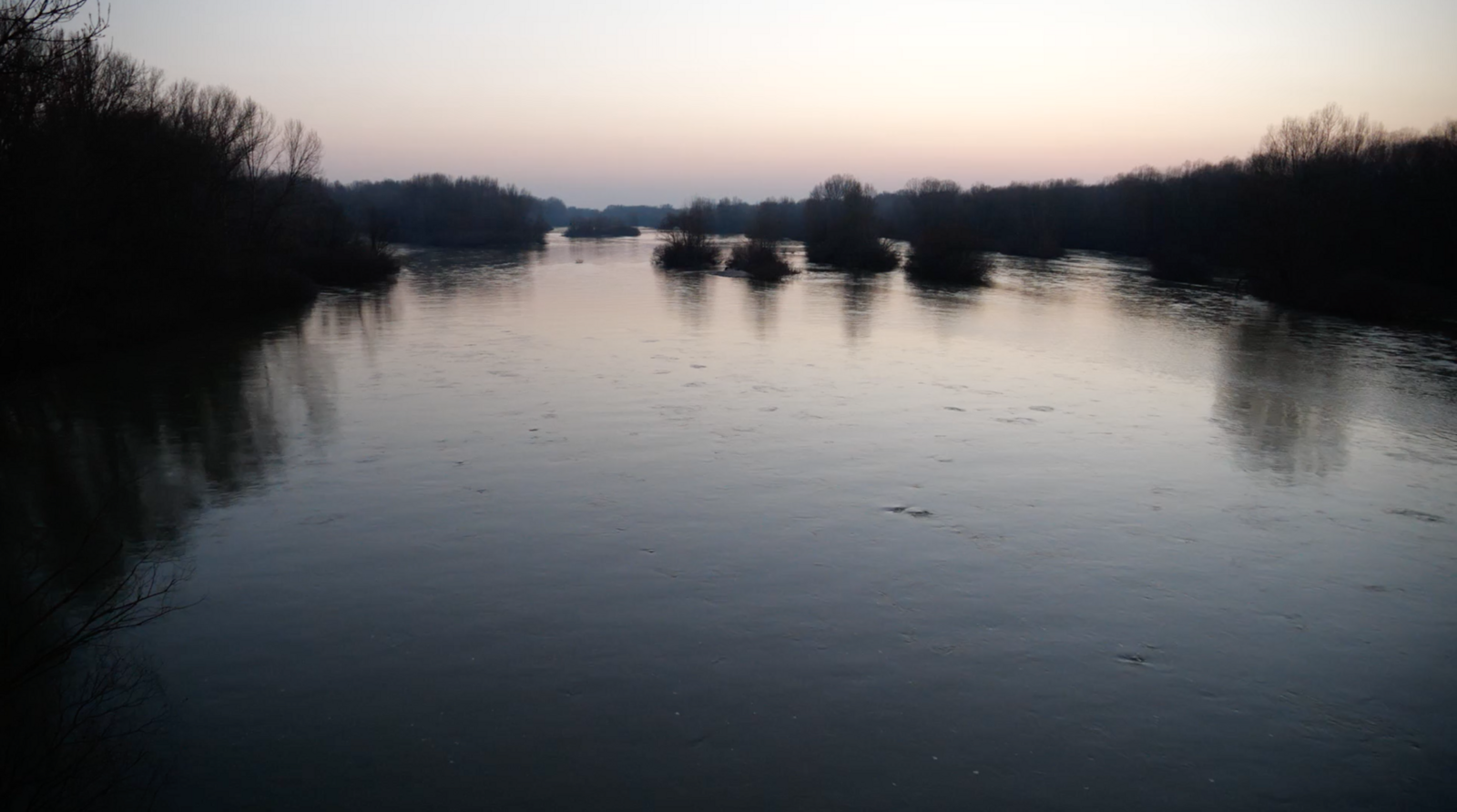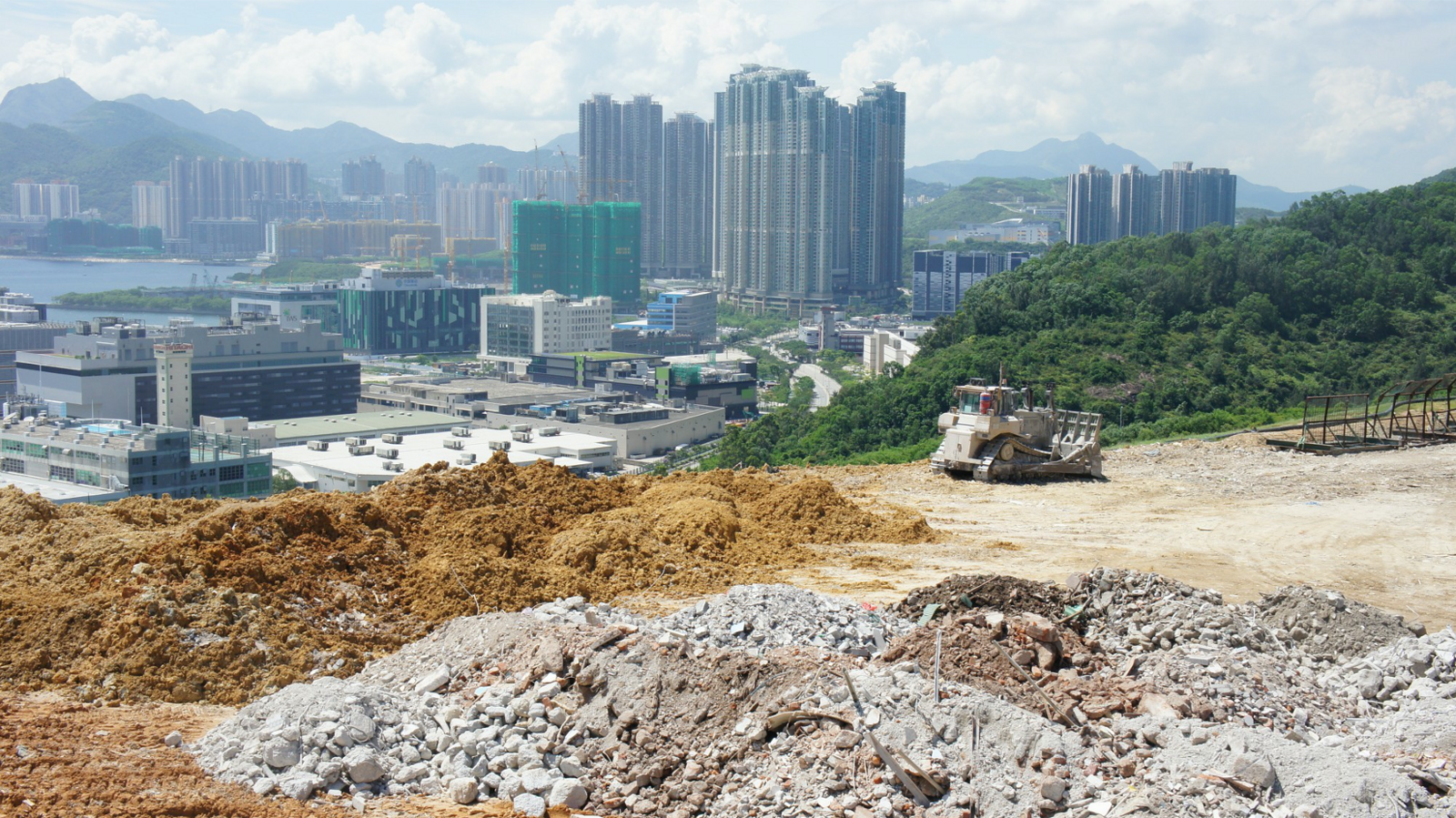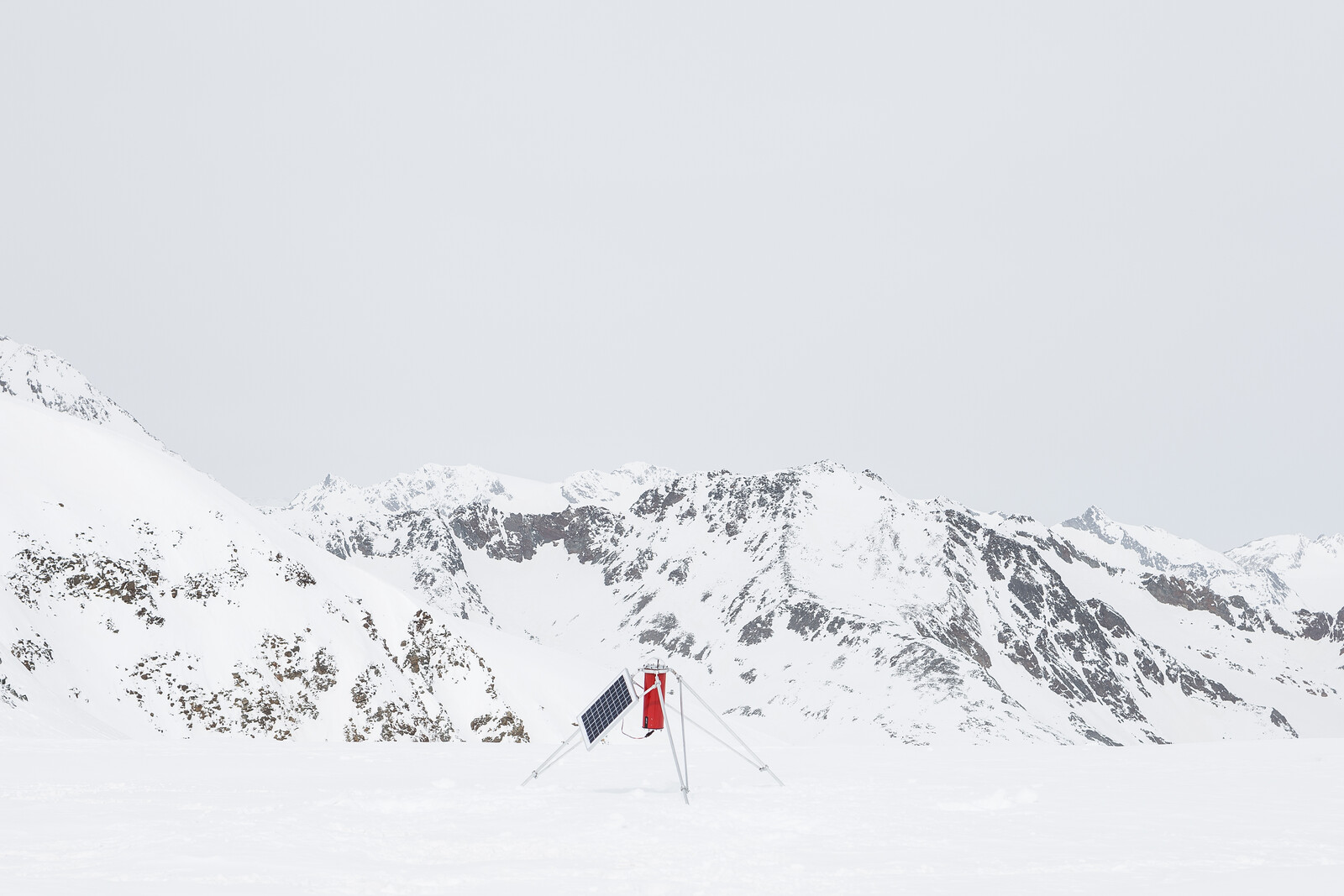The border between the US and Mexico was first defined by the “United States and Mexican Boundary Survey” (1848–1855) in accordance with the Treaty of Guadalupe Hidalgo, which ended the Mexican–American War.
About forty years later, the first border control point was installed, in 1896 at Eagle Pass, Texas. In 1918, the first recorded border fence was built at Nogales, Arizona. Its construction was ordered by Felix B. Peñaloza, the mayor, of Nogales, Mexico. In his opinion, the fence would help to “direct the flow of people crossing the border through two gateways, to make it easier for a growing number of soldiers, customs agents, and other officials to oversee transborder movement.”1 But soon after fence was erected, a conflict broke that resulted in a two-hour shootout between officers on both sides. “At least twelve Mexicans and Americans had been killed, including Peñaloza, who had built the fence precisely to minimize the risk of conflict between the nations.”
Despite the fact that this first fence building activity was not very successful in negotiating conflicts, the fence in Nogales remained, and more barriers were about to come. Yet it was not until the 1990s that signs of serious barrier construction appeared. The most significant fence building activity before the 1990s was a five-mile chain-link fence in 1945 and twenty-seven miles of punched-out-metal fence during the Carter era in the late 1970s dubbed the “Tortilla Curtain.”2 Most fences during the postwar period were erected on both sides of border at crossing points to prevent vehicles and people from circumventing controls.
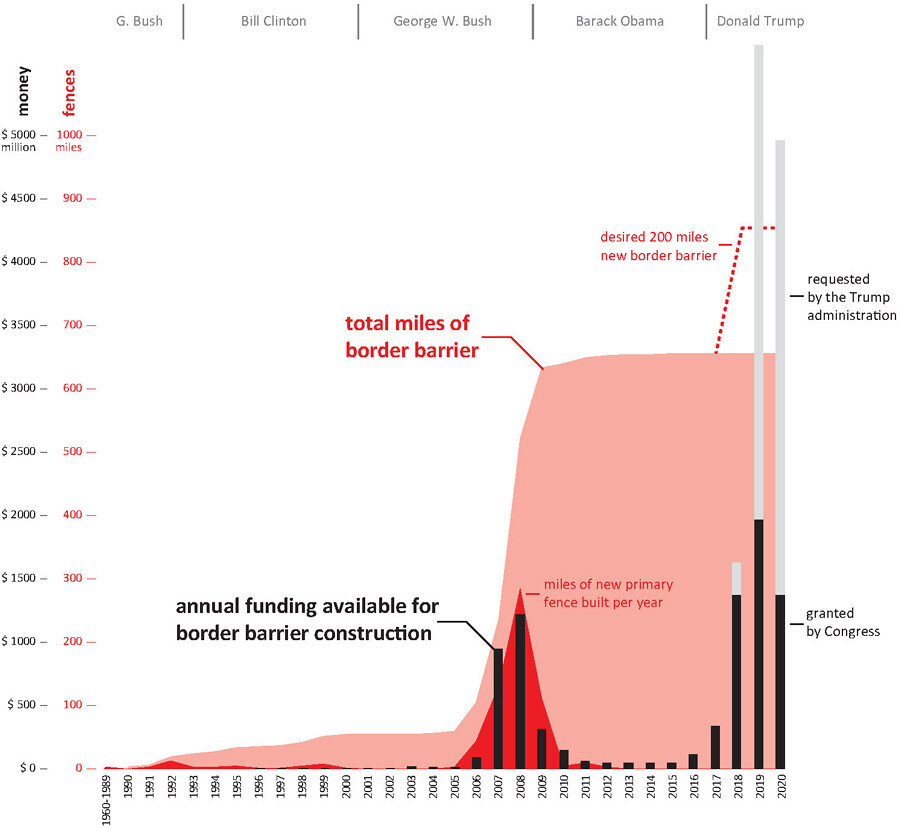

US-Mexico Barriers: Finance and Miles. Drawing: Theo Deutinger, 2020.
In the 1990s, first fences separate from border crossing points were erected out of portable Marston Mats (M8A1).3 These ten-foot-long, fifteen-inches-thick corrugated metal panels were originally used during the Vietnam War as landing pads for aircraft and parking areas for vehicles. Yet at the border, supported by metal studs, they formed a ten-foot-high steel wall. Marston Mat walls can still be found along large parts of the border today, in every state except Texas.
Until the mid-2000s, border fence construction remained rather marginal. Only fifty miles of the 1,954-mile-long border were fenced by the end of the 1990s. The annual budget for “Tactical Infrastructure” (the bureaucratic term for border barriers) was $6 million in 2002, and still as low as $15 million in 2005.4 In 2007, however, the budget skyrocketed to $647 million. This sudden increase was a result of the “Secure Fence Act of 2006,” which authorized and partially funded the construction of 700 miles of fencing along the US-Mexican border. The Act was signed into law on October 26, 2006, by US President George W. Bush, with wide bipartisan support (including senators Obama, Clinton, Schumer, and Biden).5
Until the Secure Fence Act, there were no clear design guidelines for border barriers, which resulted in a large variety of fence typologies. We have identified eight barrier and wall typologies, plus eleven fence typologies. Of these nineteen typologies, many varieties in topping, foundation, and dimension exist, which is the result of differences in terrain, year of construction, and different contractors. From this large diversity of border barrier typologies, one particular fence has recently come to the fore: Personnel-Vehicle Fence Type 1 (PV-1).
The first mentioning of the Personnel-Vehicle Fence Type 1 (PV-1) is issued in a document by the Department of Homeland Security dated May 2008, a few months before the completion of the first segment using PV-1 fencing.6 The fence consists of vertical steel bollards with a six-by-six-inch square profile filled with concrete. The distance between the vertical bollards is about five inches (the original sketch in the 2008 document shows less distance between the bollards, but an opening for cats to pass through instead). Nine vertical bollards are mounted together to form one fence element which is placed in an in-situ concrete foundation. At the top, the PV-1 finishes with a five-foot-high steel plate, but occasionally, this plate is omitted. The first PV-1, built in August 2008, is still standing at Andrade, California, between Boundary Monument 210 and 207.7
PV-1 became “the fence,” or better known as “the wall,” in Donald Trump’s presidential campaign, and who later downgraded it to “steel slats.”8 The PV-1’s breakthrough moment was on October 26, 2018, in Calexico, California when the president mounted a plaque on it to commemorate the erection of his first section of the border wall.9 Yet the wall was not a wall, but a fence, one that was designed during the George W. Bush administration, and the particular section in Calexico being commemorated was in fact a replacement of an existing structure that was already approved and built by the Obama administration in 2009.
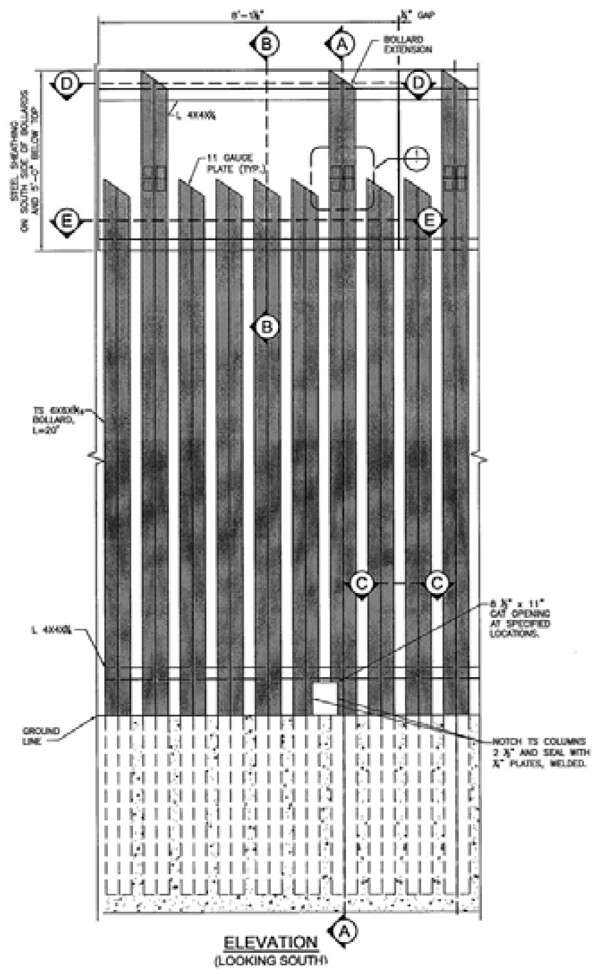

PV-1 Fence Design Scheme, May 2008. Source: Department of Homeland Security.
There is little known about the person, or team behind the design of PV-1, but the 2008 brief exists and states clearly that the fence must:
extend fifteen-to-eighteen feet above ground and be supported in subsurface footers at depths deemed necessary;
be capable of withstanding an impact from a 10,000-pound gross weight vehicle traveling at forty miles per hour;
be semi-transparent, as dictated by operational need;
be designed to survive extreme climate changes of a desert environment;
be designed to allow movement of small animals from one side to the other; and
not impede the natural flow of water.10
The only difference between the initial design and the current version of PV-1 is height. While the 2008 brief mentions fifteen-to-eighteen feet, its current design is eighteen-to-thirty feet.
After Trump spent $3.3 million on the construction of eight new border wall prototypes, the final success of the PV-1 was ultimately decided upon by Congress. In approving the budget for the 2017–2019 fiscal years, Congress included a note in the Department of Homeland Security Appropriations bill that the apportioned money has to be used on “previously deployed and operationally effective designs, such as currently deployed steel bollard designs, that prioritize agent safety.”11 Additionally, it was stated that the money only can be spent on barrier replacement, not new barrier construction.
While this might have been seen as a blow for Trump and his promised wall, in July 2017, a year before the eight prototypes have been completed, he already mentioned that PV-1 might be the “wall” he always had in mind. Yet the war of words continued. The Congressional Research Service mentioned in its January 2020 “DHS Border Barrier Funding” report that “News stories indicate that the White House has reportedly asked CBP [Customs and Border Protection] to stop using the term “replacement barrier” because it sounds like a lesser accomplishment.” The White House prefers to use the term “new border wall system.”12
PV-1 construction continues. In December 2019, two companies were commissioned with PV-1 construction: $789 million is being paid to the Galveston, Texas-based general contractors SLSCO Ltd., which will replace forty-six miles of vehicle barriers along the New Mexico border; and the Bozeman, Montana-based construction company Barnard Construction Co. received a $187 million contract to build eleven miles of fencing in three separate segments along the Yuma County border in southwestern Arizona.13
PV-1 is slowly turning into an iconic structure, symbolizing the border between the US and Mexico, not unlike how the concrete wall with its rounded top symbolized the Berlin Wall. Yet no barrier is unsurmountable.14
Rachel St. John, “The Raging Controversy at the Border Began With This Incident 100 Years Ago,” Smithsonian Magazine (July 2018), ➝.
Greg Grandin, “The Border Wall Is Symbolic of a Nation Trapped by History,” truthdig, January 14, 2019, ➝.
“Marston Mat,” Wikipedia, ➝.
The Working Group on Human Rights and the Border Wall, “Obstructing Human Rights: The Texas-Mexico Border Wall,” Submission to the Inter-American Commission on Human Rights, June 2008, ➝.
H.R. 6061 (Secure Fence Act of 2006), passed September 29, 2006, ➝.
US Department of Homeland Security, US Customs and Border Protection, and US Border Patrol, “Environmental Stewardship Plan for the Construction, Operation, and Maintenance of Tactical Infrastructure U.S. Border Patrol Yuma Sector, Arizona and California,” May 2008, ➝.
Calle Cuarta, Los Algodones, Baja California, Google Street View, June 2009, ➝.
WhatA World, “Trump: “Steel Slats! Steel Slats!” So much for a WALL (5sec),” YouTube, January 3, 2019, ➝.
Peter Wade, “Trump Takes Credit for Obama’s Border Wall,” Rolling Stone, April 6, 2019, ➝.
US Department of Homeland Security, US Customs and Border Protection, and US Border Patrol, “ Final Environmental Stewardship Plan for the Construction, Operation, and Maintenance of Tactical Infrastructure, U.S. Border Patrol, Tucson Sector, Nogales Station, Arizona,” August 2008, ➝.
115th Congress, “Making appropriations for the fiscal year ending September 30, 2017, and for other purposes,” 131 Stat. 135, Public Law 115–31, passed May 5, 2017, ➝.
Congressional Research Service, “DHS Border Barrier Funding,” January 29, 2020, ➝.
Daniel Borunda and Rafael Carranza, “Pentagon awards first military-funded contracts for border fence in New Mexico and Arizona,” El Paso Times, December 14, 2019, ➝.
NowThis News, “Man Climbs Over Trump’s Border Wall,” YouTube, December 7, 2019, ➝.
At The Border is a collaboration between A/D/O and e-flux Architecture within the context of its 2019/2020 Research Program.
